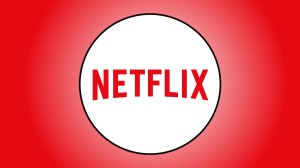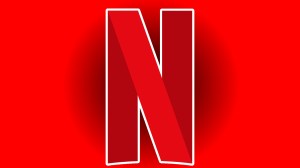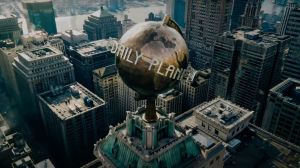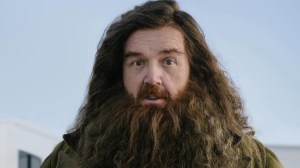Times were tough for Star Wars fans in the early ’90s, as the general public had seemingly moved on from the sci-fi franchise and, despite how many records it broke at the box office, the mythology had been relegated to books, comics, and video games, with the last live-action entry being the made-for-TV Ewok movies in the mid-’80s. Luckily, as the 20th-anniversary for Star Wars: A New Hope approached, reports began to emerge that creator George Lucas would be revisiting his films to deliver Special Edition releases, featuring upgraded visual effects, audio improvements, and additional scenes. While purists might bemoan the tweaks made to the flawless original trilogy and the trend of Lucas’ endless tinkering to the films, few things have been better for the franchise than the release of the Star Wars Special Edition trilogy.
Videos by ComicBook.com
The world of movie theaters was entirely different in the late ’70s and early ’80s, as films would be screened for months and even earn re-releases, as opposed to studios pulling films from theaters in a matter of weeks and sending it to home video two months after their premieres. For those fans who were around at the time of the release of the original trilogy, it was easy to see the film on the big screen, with the home video market and cable network boom complicating the ease of watching the trilogy in your living room. The Special Edition release allowed an entire generation of fans who had grown to love the film by catching screenings at home to see the films how they were meant to be seen, allowing them to finally experience the film’s fanfare and opening crawl in a larger-than-life-format. No matter how many times you’ve seen the film at home, nothing compares to seeing it on the big screen, with the Special Edition immediately creating life-long memories with those first theatrical screenings.
Part of what gave the original trilogy its charm is that, despite taking place a long time ago in a galaxy far, far away, they were ramshackle productions that allowed audiences to see all of its production flaws. The visual effects helped set the standard for what could be accomplished in science-fiction but, over the course of 20 years, the industry saw major upgrades. Lucas was able to revisit the somewhat outdated effects and completely overhaul them to meet the standards of audiences in 1997, giving the filmmaker’s visual style the justice that it had deserved.
Technical upgrades weren’t entirely thrilling for all audiences, with the tease that the films would include new footage being a bigger draw to longtime fans. The biggest changes were seen in Star Wars: A New Hope, which saw an extended Mos Eisley introduction, a deleted encounter between Han Solo and Jabba the Hutt, and, yes, a change to Solo’s encounter with Greedo. For decades, the films stood alone as static relics, while the Special Editions reminded audiences that the saga was a living, breathing experience. A CGI Jabba the Hutt was far less effective than the practical gangster audiences knew from Star Wars: Return of the Jedi, but these upgrades helped confirm to fans just how passionate about the franchise Lucas remained after all these years.
To address the Rodian in the room, you’ll be hard-pressed to find anyone who prefers seeing Greedo fire at Solo first, or even at the same time, as compared to how the original sequence plays out. What is important to note about the sequence is that viewers are witnessing fictional events unfold between fictional characters in fictional worlds. In other words, there is no objective reality that the film depicts and, no matter how the firing sequence plays out, it still results in Solo walking out of the Mos Eisley Cantina and Greedo paying the ultimate consequence. While some fans live and die by the concept of a concrete canon, Lucas upended the entire notion of canon with the tweaks to the scene. You’re more than welcome to be hung up on such details, but the outcome of the encounter between Solo and Greedo always remains the same, adding a mythological element and a potential unreliable narrator to the equation.
Admittedly, it might be frustrating to some fans to see how often Lucas has updated certain sequences — which includes the most recent death rattle utterance of “maclunkey” by Greedo — but, for as much as we love these films and take ownership of them, they are still the products of their creator who can do with them what he wishes. We might prefer Solo shooting first, but if Lucas’ vision is the pair shooting at the same time, we are forced to accept this. By accepting these small changes, which ultimately don’t have any major impact on the overall narrative, we are reminded that we are lucky to witness these movies in the first place and aren’t owed anything by the storytellers.
Star Wars: The Empire Strikes Back earned the smallest amount of changes, though seeing the world of Cloud City open up with the help of a handful of visual effects sequences offered audiences a much better explanation for why Leia should belong “among the clouds,” as Lando Calrissian put it. Similarly, Star Wars: Return of the Jedi had some upgraded visual effects and an added musical sequence, yet it’s the film’s finale that really opens up the world of the franchise. Rather than seeing a celebration unfold exclusively on the Forest Moon of Endor, we see glimpses of other planets celebrating the death of the Emperor and demise of the Galactic Empire, teasing that the world of the series was so much bigger than the events that unfold with Luke, Han, Leia, and Darth Vader.
From a cultural standpoint, the Special Edition trilogy made Star Wars matter again. It came to the forefront of pop culture on the way to the release of Star Wars: The Phantom Menace, with the Special Editions helping A New Hope become the top-grossing movie of all time, if only to lose that title to Titanic. The impact of the upgrades to the films themselves pale in comparison to the cultural impact of the films dominating the box office, further cementing the saga’s prominence in the world of storytelling to make the series arguably more popular than ever in the eyes of many.
Star Wars: The Rise of Skywalker lands in theaters on December 20th.

Welcome to Star Wars Week! ComicBook.com is celebrating the release of Star Wars: The Rise of Skywalker all week long with an in-depth look at the last four decades spent in the galaxy. Click on the banner to see more of our exclusive coverage and videos celebrating all things Star Wars!









